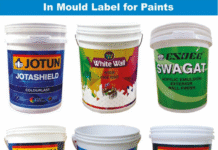
Food with plastic packaging may contain chemicals that cause serious health issues like cancer, infertility, or gene mutations. The study found that the food wrappings had 388 individual ‘chemicals of concern’, comprising 352 CMRs (carcinogenic, mutagenic, and reproductively toxic substances).
Food packaging that contains plastic particles (known as monomers) is known to be unsafe. The particles can easily enter edibles during regular use and come into human contact. Studies revealed 388 harmful substances, of which 352 were carcinogenic, mutagenic, and toxic to reproduction. A further 22 were chemicals affecting hormones or endocrines and 32 with persistence and bioaccumulation health risks (As per the MSN report).
Further studies showed the presence of more than 127 harmful molecules present in the food packaging materials. The above studies dismiss the fact that the contents for manufacturing plastic polymers do not enter the finished products.
Study of chemicals in food packaging
Dr Jane Muncke, the managing director of the Food Packaging Forum in Zurich, Switzerland, told MSN that her study provides scientific data that multiple toxic chemicals are used in food contact materials in Europe, and all people consuming them are digesting the same chemicals with their food.
By thoroughly researching the chemicals used in packaging, the Swiss team created the List of Food Contact Chemicals of Concern (FCCoC). It will aid in implementing the EU’s Farm to Fork and Chemicals Strategy for Sustainability programs. This method allows the manufacturers and researchers to improve the customers’ safety.
Information about harmful monomers
Muncke added that among the 30 monomers that were part of the FCCoC list, there are some known plastic monomers such as acrylamide polymerized to polyacrylamide, styrene used to make polystyrene, bisphenol A used in polycarbonate plastics, and vinyl chloride used to make polymer polyvinyl chloride.
From the mentioned 30 monomers, 22 were discovered migrating into food or a food simulant, suggesting that monomers can migrate into foodstuff and become available for human exposure through food consumption.
Most monomers with evidence for migration into food are CMRs (20), and four are EDCs. Few chemicals that have been restrained in Europe due to their harmful properties are bisphenol A and several phthalates used to increase the plastic’s durability, flexibility, and transparency.
Muncke further stated that their studies showed hundreds of harmful chemicals used intentionally in some FCMs. They had checked out over 388 FCCs that had hazardous properties and should be exempted from the food packaging.
The abundance of plastic in our environment
Global plastic production stood at 404 million tons during FY 2020, and more than one-third were emitted into our food. There are problems when these chemicals come in contact with the foodstuffs and environment during the manufacturing, use, disposal, and recycling.
The identified toxic chemicals were used not only as the main ingredient during the plastic packaging production but also for several other functions, from biocides to prevent molds and used as flame retardants to increase fire resistance and plasticizers to increase the dyes and adhesives.










